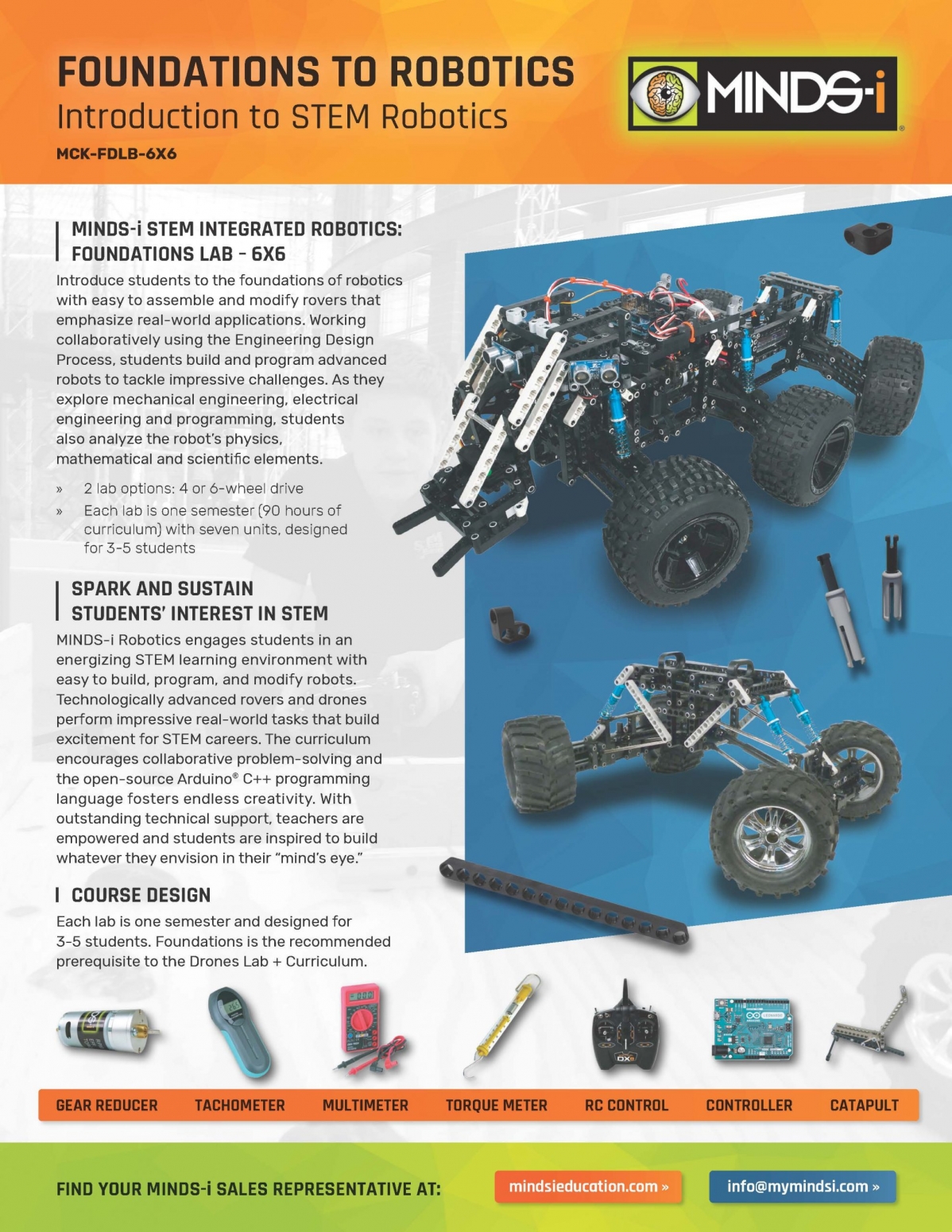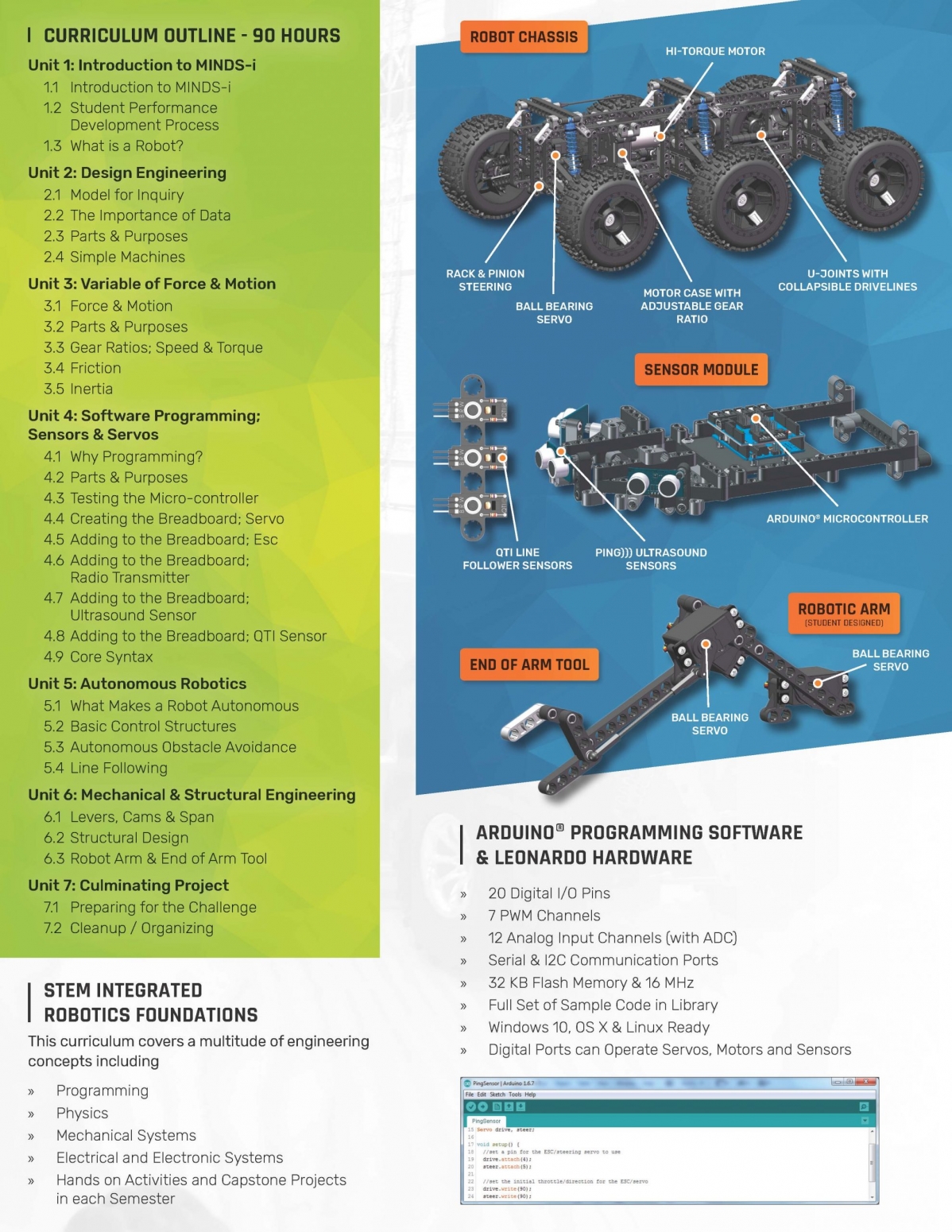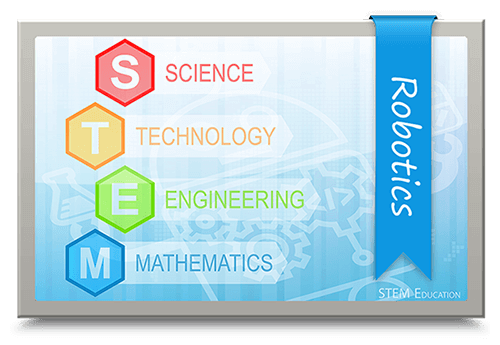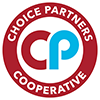STEM Robotics Foundations Curriculum (90 Hour)
The MINDS-i STEM Robotics Foundations Curriculum is an introduction to the STEM and Robotics. Designed as an interactive approach to applied science, technology, engineering and math, this course will allow the student to become familiar with the basics of robotics and programming through teamwork.










